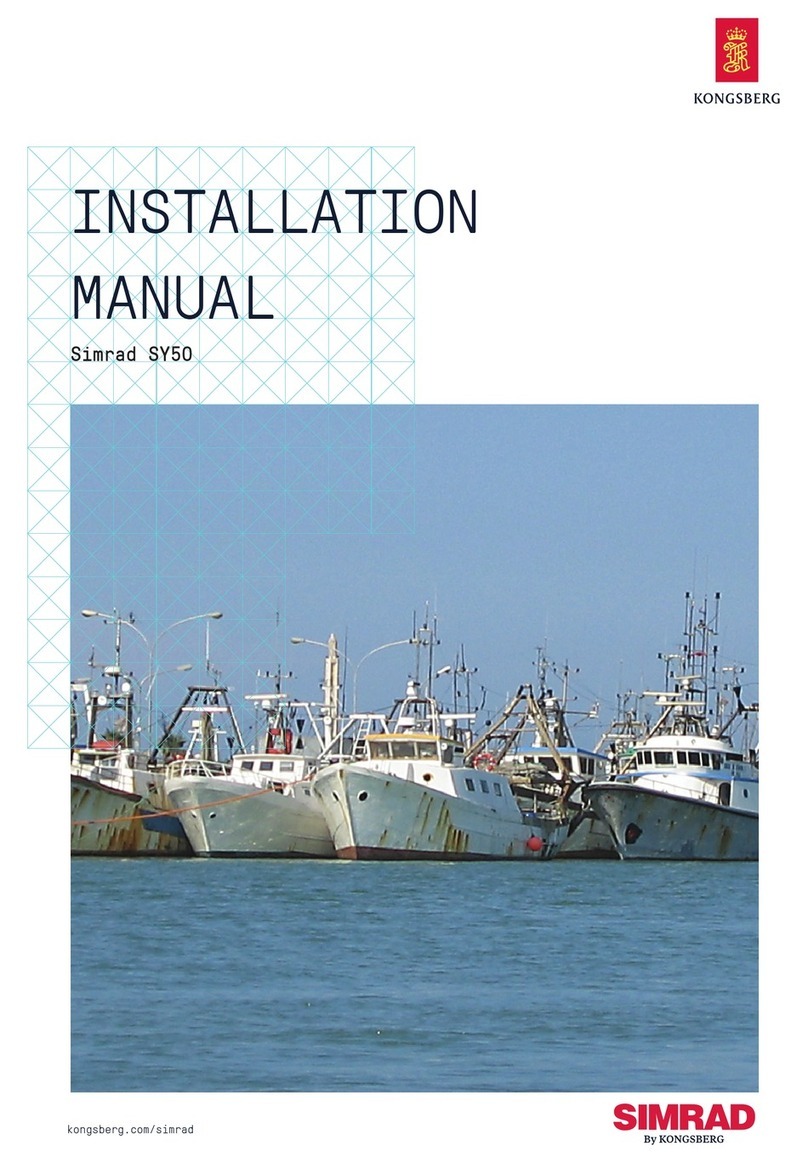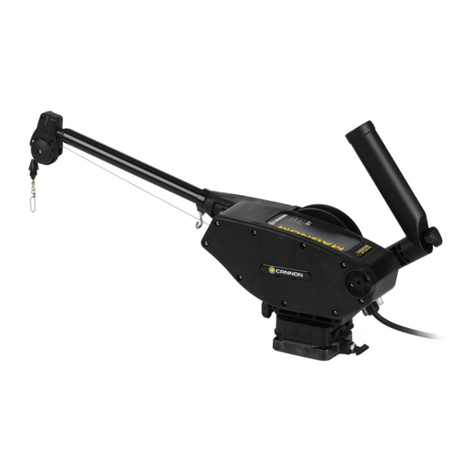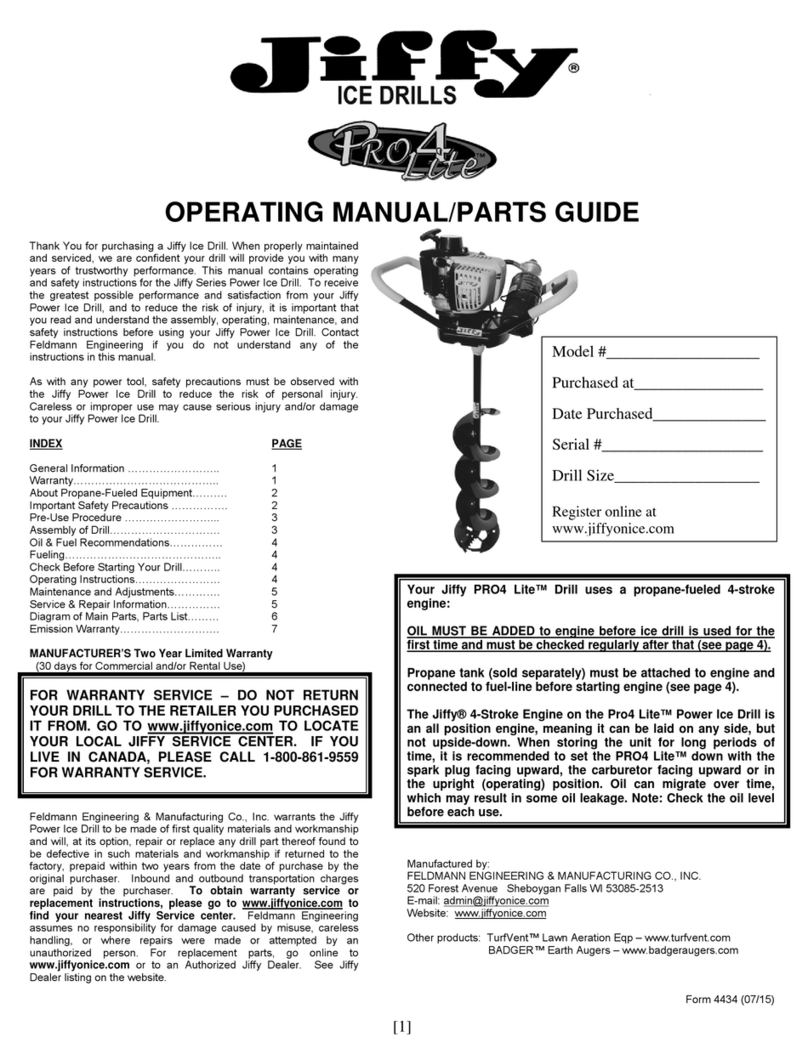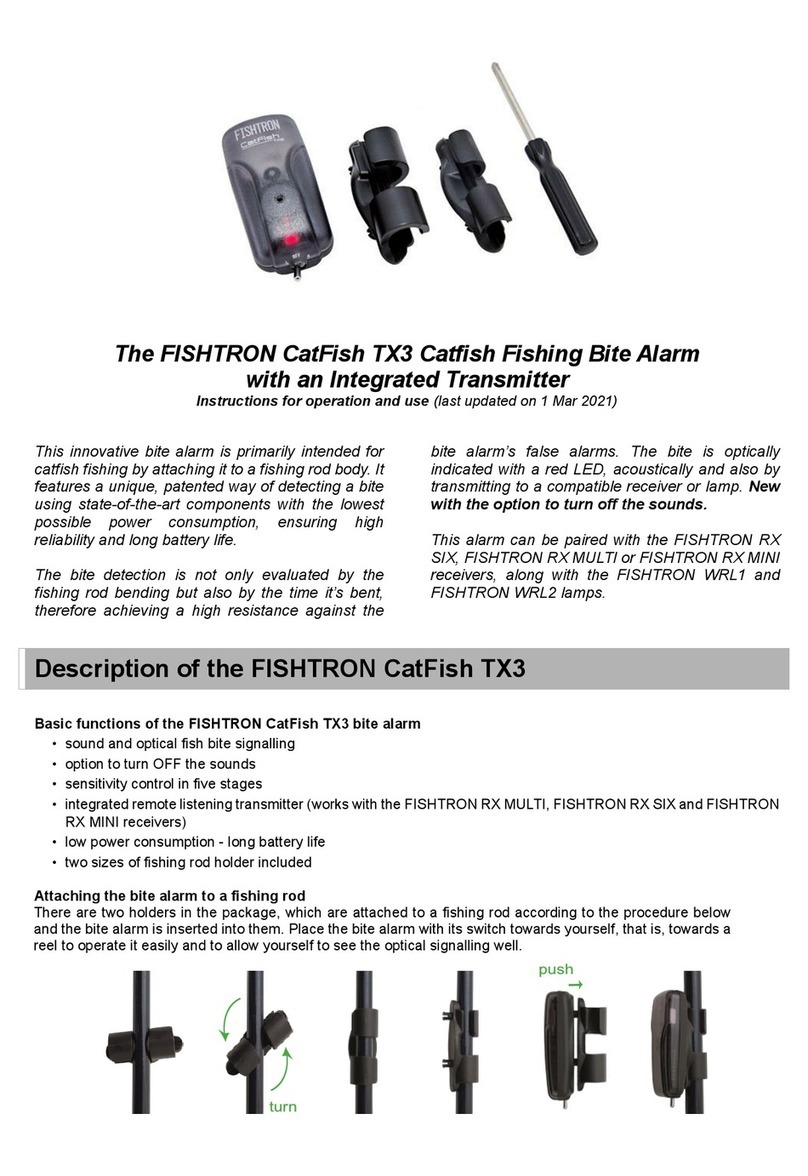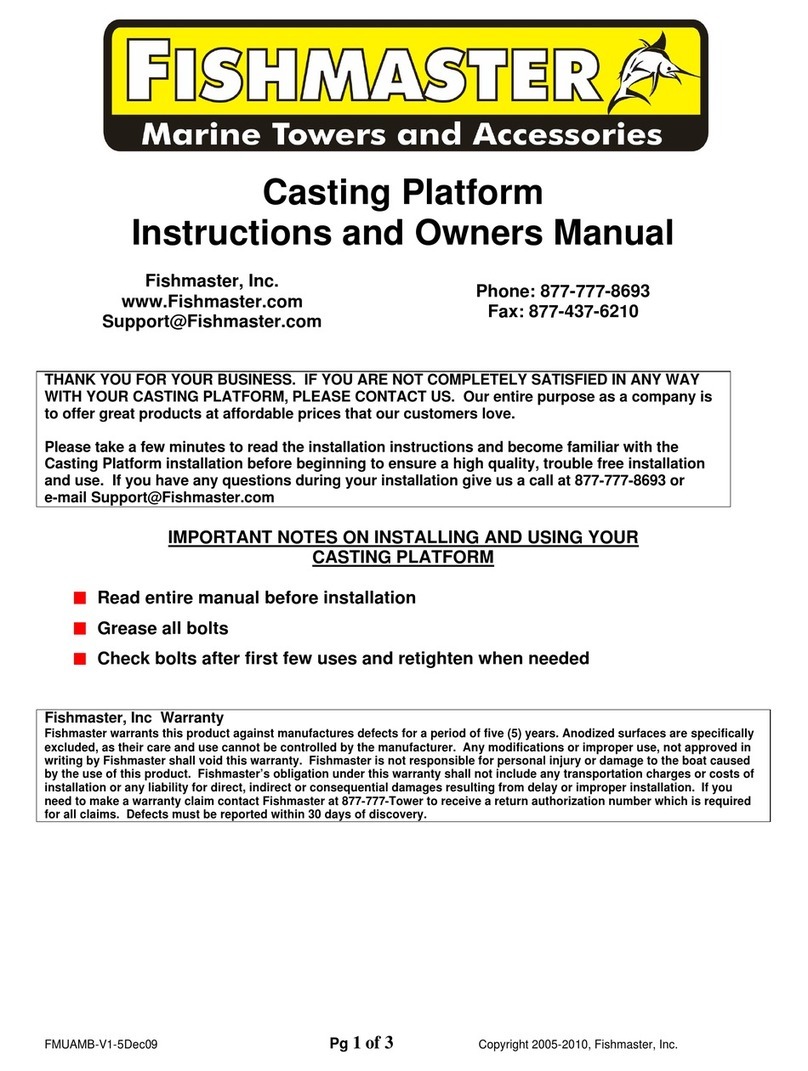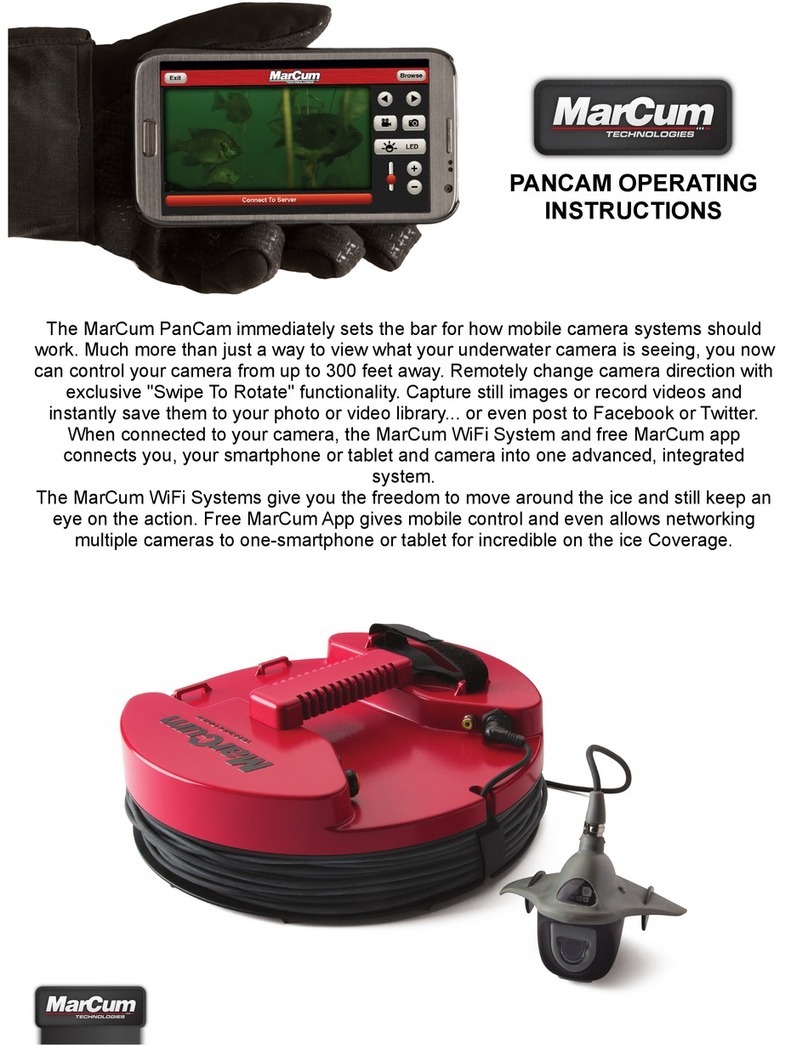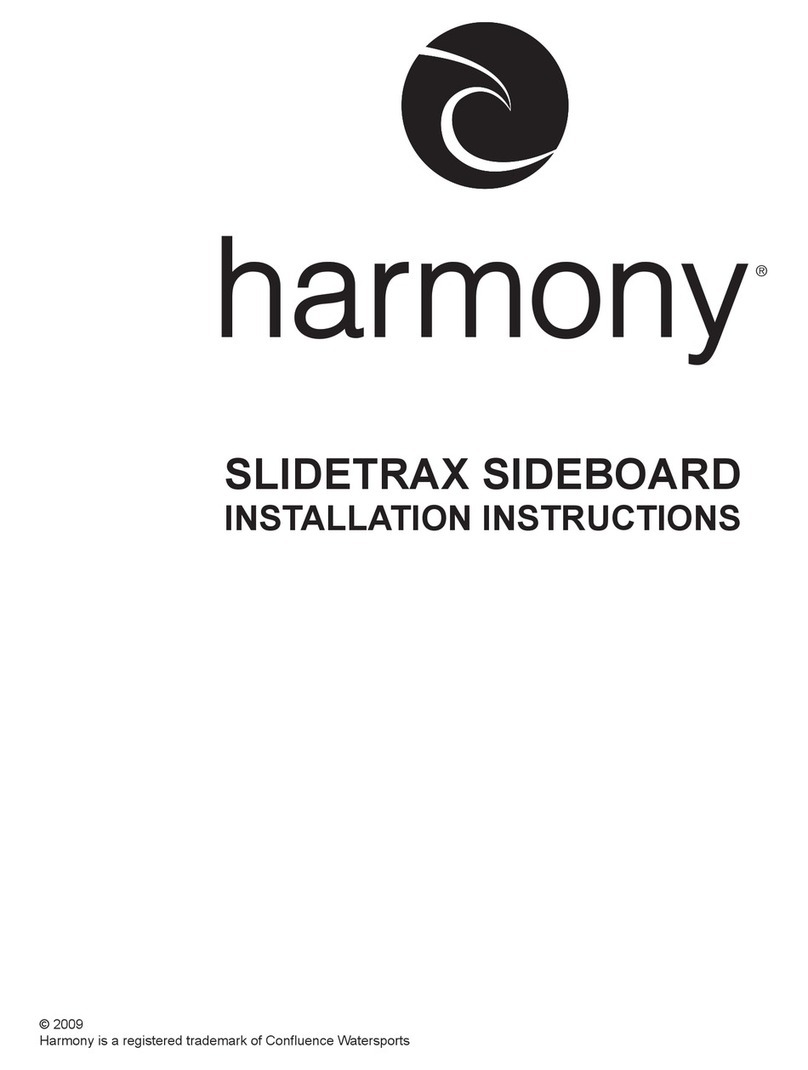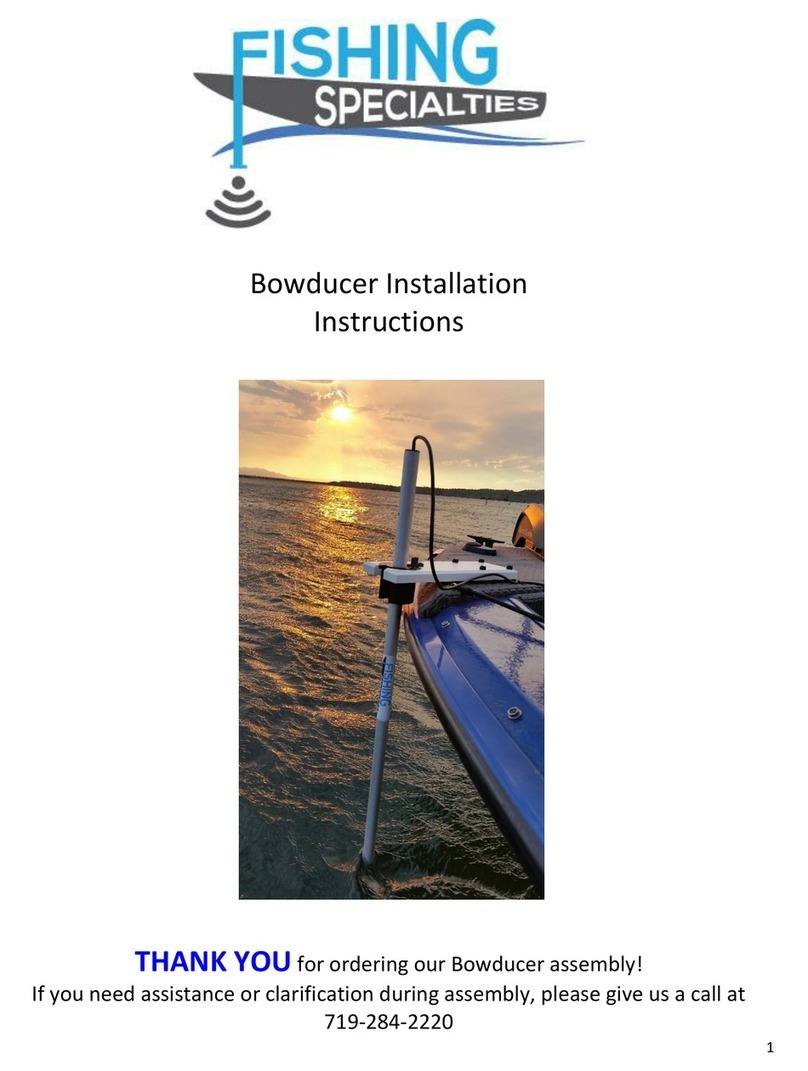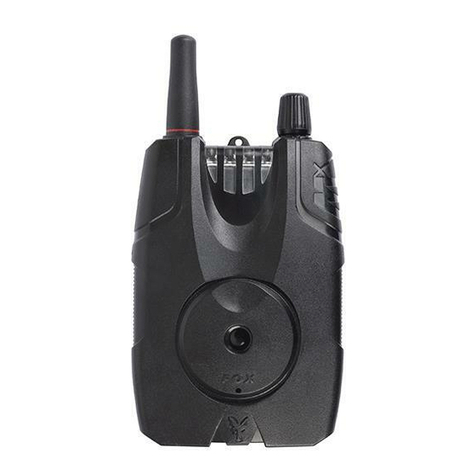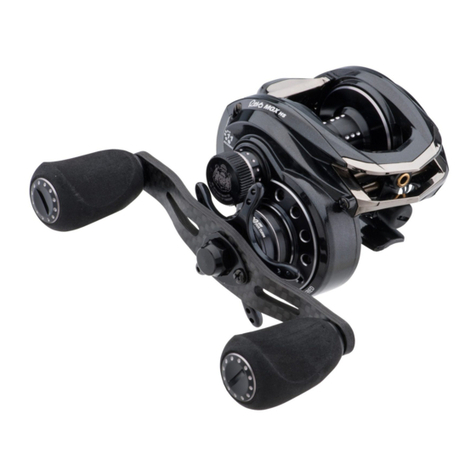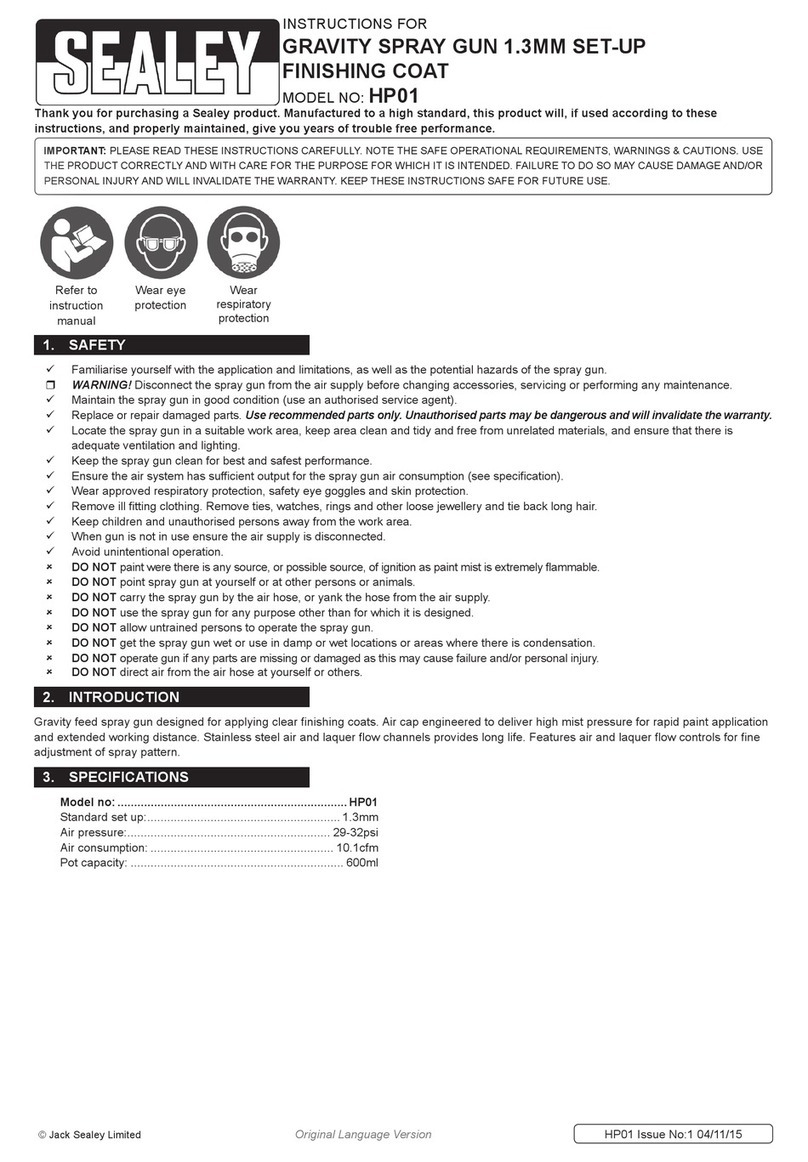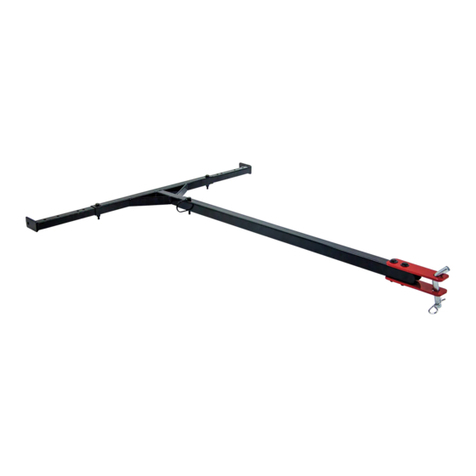
45
BASIC CONCEPTS OF VEXILAR USE
Vexilar FL/FLX series color ashers are great tools for open water and
ice shing. Once you learn to understand the basic concepts and meaning
of the color display, you can apply this knowledge to greatly increase your
shing success. All the FL/FLX Series ashers can be used for:
• Determining the current depth at any boat speed.
• Locating sh-holding underwater structure.
• Determining the bottom hardness and transition lines.
• Penetrating thick vegetation to see what’s below.
• Finding sh and the bait they feed on.
• Watching your bait and the sh around it.
Range Control
Depth Range determines the maximum depth of water in which the
asher can see the bottom. For example, the shallowest range available
on the FL-18 is 0 to 20 feet. This means that if the water depth is between
zero and 20 feet, the bottom will be displayed on the screen. If the water
depth gets deeper than 20 feet, you will need to select a deeper depth
range in order to see the bottom. It is usually best to select the shallowest
depth range possible to see the bottom. This allows the water column
below to be represented by the greatest amount of display screen area.
This oers the highest resolution, makes things bigger and easier to see.
THE VEXILAR DISPLAY
Each FL series asher display consists of multiple colors
(marks) which appear at various positions on the screen.
Understanding what the colors mean, and the position and
size of the colored marks, is the key to being able to interpret
the information correctly.
RED = Strong Strength Signals. Strong signals are
generally produced by signicant underwater objects, such as
the bottom, heavy vegetation, and large sh. However, smaller
objects, such as bait sh, can display as red if the object is
directly under the transducer.
ORANGE = Medium Strength Signals. Medium
signals are produced by smaller objects and softer bottom
types. Also, medium strength signals can be produced by
larger objects in the immediate area around, but not directly
under, the transducer.
GREEN = Weak Strength Signals. Weak signals
are produced by small objects, such as light vegetation, bait
sh, and even air bubbles or aquatic micro marine life. Larger
objects o to the sides of the transducer can also be displayed
as green.
The Zero mark always shows, even if
the transducer is unplugged. This mark
indicates the starting point. Marks just beyond
the Zero mark can
indicate algae, floating
vegetation, or even “ice
noise” caused by thick
ice conditions.
Bottom is generally
the most prominent
mark on the
display. Bottom
usually starts with
a wide band of red,
with orange and
green trailing.
READ DEPTH HERE: The current depth
is indicated by the leading edge of the
bottom mark. The depth is 12 feet here.
You read the
display in the
clock-wise
direction. The
further around
you go, the
deeper the water.
Fish, bait fish, and even
your lure, will show
anywhere between
the Zero mark and the
Bottom mark. Here,
a weak object shows
about a foot above a
much stronger object.
Marks beyond the
bottom mark can
indicate either hard
objects within a
soft bottom or large
objects well off to
the side.
Understanding the Display Marks
This is the basics of what you will see on the display.
FLX-28 and FLX-30BB models have additional color options. See page 56 for more information.
Gain Control
Gain controls the amount of amplication applied to the return
sonar signal. Think of gain as your volume control. You turn up the
gain to see more of what’s below. You turn down the gain to see less
of what you don’t want to see. The goal is to nd a gain level that
shows you as much real information as possible, without displaying
stray signals of clutter and interference. Keep the gain setting as low
as possible for best overall performance.
Gain can act as a variable cone angle. As you increase the gain level,
you can see things further away from the transducer. This can be
helpful in uncluttered conditions. If you don’t see anything on the
screen (other than bottom), turn up the gain temporarily and see if
anything shows up. If it does, it could be a sh some distance away
from your transducer. Unfortunately, this won’t work in cluttered
water, such as weedy conditions, because the objects in the center
of the cone will get amplied and overlap anything on the outside,
making these objects impossible to distinguish. This is the hallmark
of the Pro-View transducer.
Interference Rejection
This feature rejects sonar interference generated by other nearby
depth sounders. Interference Rejection, or IR, comes on automatically
when you turn the asher on, and you can further adjust it if needed.
See page 6 for details.
Flasher-Family-Manual-2020.indd 4-5Flasher-Family-Manual-2020.indd 4-5 5/20/20 2:16 PM5/20/20 2:16 PM
